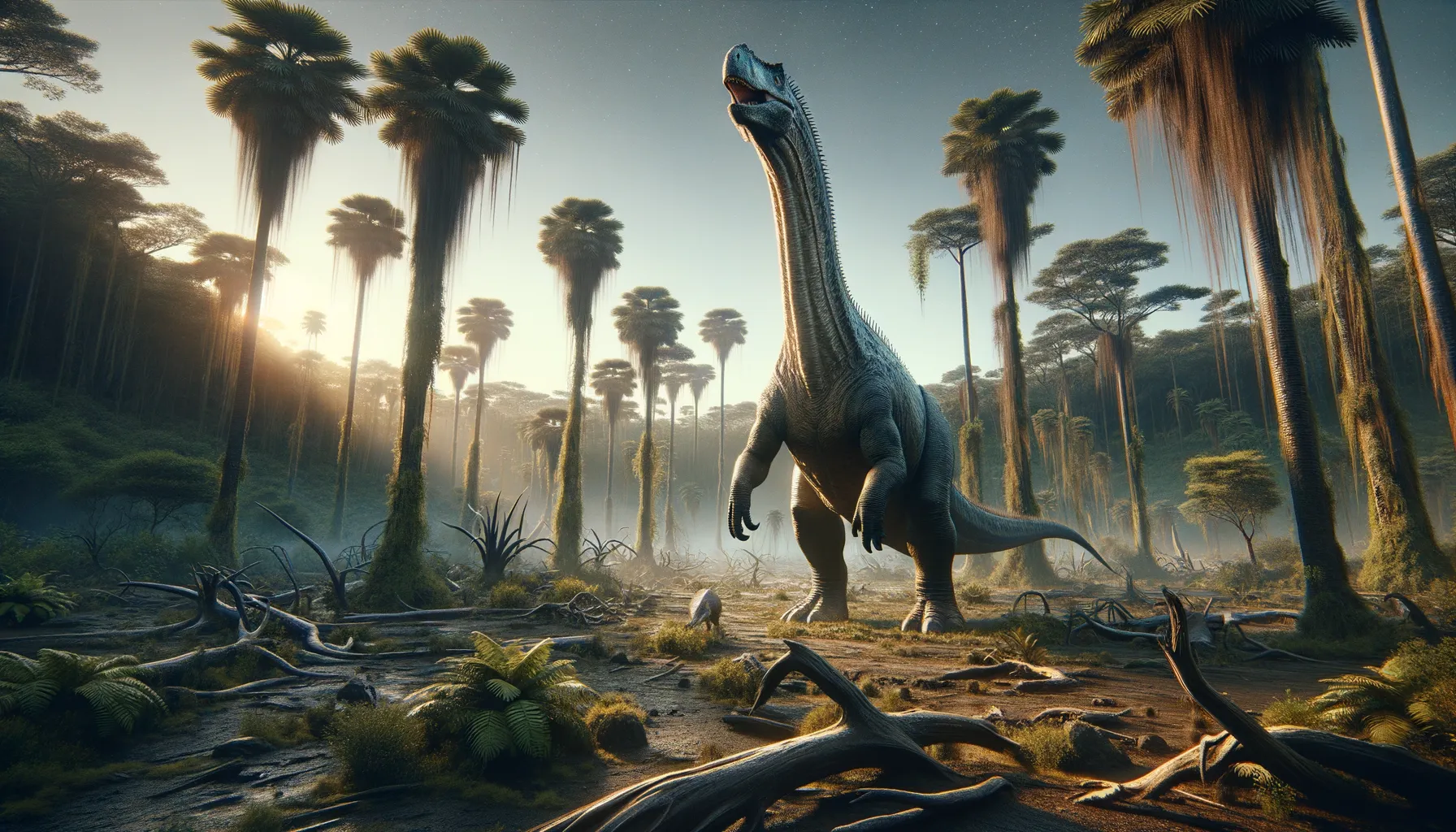
Futalognkosaurus
A gentle giant of the prehistoric world.
Period
Cretaceous
Length
About 100 feet long from head to tail.
Height
Approximately 15 feet tall at the shoulder.
Weight
Weighed around 50 to 70 tons.
Futalognkosaurus was a gigantic sauropod dinosaur known for its enormous size and long neck, which it used to reach vegetation high above the ground. Living during the Late Cretaceous period, it inhabited what is now known as South America. Fossils of this dinosaur have provided significant insights into the massive creatures that roamed the Earth millions of years ago.
Diet
This dinosaur was herbivorous, feeding primarily on plants. Its long neck allowed it to graze on a variety of foliage, including leaves, ferns, and other vegetation.
Hunting
As a herbivore, it did not hunt but grazed on plants. It relied on its height and long neck to access food resources that were unreachable to other herbivores.
Environmental challenges
Futalognkosaurus faced challenges in finding sufficient food due to its massive size and the vast quantities of vegetation required. The Late Cretaceous period experienced shifts in climate and vegetation, which could impact food availability. Additionally, it had to be on the lookout for predators despite its size providing some protection.
Speed
Slow-moving due to its massive size.
Lifespan
Estimated to be several decades long.
First discovery
Discovered in Argentina in 2000.
Fun Facts
- Futalognkosaurus was one of the largest dinosaurs ever discovered, possibly reaching lengths of up to 100 feet.
- Its name means 'giant chief lizard,' which comes from the indigenous Mapuche language in Argentina, where its fossils were found.
- The dinosaur lived during the Late Cretaceous period, around 87 million years ago.
- Futalognkosaurus was a herbivore, feeding on plants as it roamed its ancient landscapes.
- It belonged to a group of dinosaurs known as titanosaurs, which were characterized by their enormous size and long necks.
- The discovery of this dinosaur's fossils helped scientists understand more about the diversity and adaptation of giant sauropods.
- Despite its massive size, Futalognkosaurus was likely light-footed, as its body was supported by a lightweight skeleton.
Growth and Development
Growing to full size took many years, during which Futalognkosaurus remained vulnerable to predation. Its growth rate was likely influenced by the availability of food and environmental conditions. Young individuals had to quickly learn to navigate their surroundings and join herds for protection.
Habitat
This dinosaur lived in lush floodplains with abundant vegetation. It favored areas with access to water sources, which supported rich plant life and provided habitat security. Such environments facilitated the large herds needed for social structure and protection.
Interaction with other species
Futalognkosaurus may have coexisted with other large herbivores, sharing grazing areas. Predators posed a constant threat, particularly to juveniles, driving herd behavior for collective safety. Its massive size likely deterred most predators, reserving encounters for young or weak individuals.
Natural lifespan
Lived for several decades if surviving to adulthood.
Reproduction
Like most sauropods, it likely laid eggs in nests. Females may have chosen clearings or soft sediment areas to lay a clutch of eggs. Parental care was probably limited, with young relying on rapid growth to survive predators.
Social behaviour
Futalognkosaurus exhibited herd behavior for protection. Social groups helped fend off predators and ensured better access to food. Herd dynamics would have included well-defined roles, especially during migrations or seasonal changes.
Fossil locations
Fossils have primarily been found in Patagonia, Argentina. The initial discovery site provided an exceptional amount of skeleton material. It is renowned for its extensive and well-preserved fossil remains, offering insight into its physiology and lifestyle.
